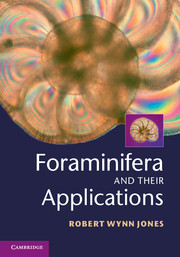Book contents
- Frontmatter
- Dedication
- Contents
- Preface
- Acknowledgements
- 1 Past, present and future foraminiferal research
- 2 Research methods
- 3 Biology, morphology and classification
- 4 Ecology
- 5 Palaeobiology, palaeoecology (or palaeoenvironmental interpretation)
- 6 Palaeobiological or evolutionary history of the Foraminifera
- 7 Biostratigraphy
- 8 Sequence stratigraphy
- 9 Applications and case studies in petroleum geology
- 10 Applications and case studies in mineral geology
- 11 Applications and case studies in engineering geology
- 12 Applications and case studies in environmental science
- 13 Applications and case studies in archaeology
- References
- Index
11 - Applications and case studies in engineering geology
Published online by Cambridge University Press: 05 December 2013
- Frontmatter
- Dedication
- Contents
- Preface
- Acknowledgements
- 1 Past, present and future foraminiferal research
- 2 Research methods
- 3 Biology, morphology and classification
- 4 Ecology
- 5 Palaeobiology, palaeoecology (or palaeoenvironmental interpretation)
- 6 Palaeobiological or evolutionary history of the Foraminifera
- 7 Biostratigraphy
- 8 Sequence stratigraphy
- 9 Applications and case studies in petroleum geology
- 10 Applications and case studies in mineral geology
- 11 Applications and case studies in engineering geology
- 12 Applications and case studies in environmental science
- 13 Applications and case studies in archaeology
- References
- Index
Summary
This chapter deals with applications and case studies in engineering geology. It contains sections on applications and case studies in site investigation and in seismic hazard assessment. The section on site investigation includes case studies from the Channel tunnel, the Thames barrier, and ‘Project Orwell’, all in the United Kingdom, and from Azerbaijan and Egypt. The section on seismic hazard assessment includes case histories from the Strait of Juan de Fuca, Vancouver Island, Canada, Iyo-nada Bay, Japan, and Hawke’s Bay and Otago, New Zealand; and from Cabo de Gata Lagoon, Almeria, Spain.
Foraminifera and other microfossils have proved of use in engineering geology, in the fields of site investigation and of seismic hazard assessment (see, for example, Jones, 1996, 2006, 2011a; and additional references cited therein; see also the further reading list at the end of the chapter).
Applications and case studies are given below. Three of the four case studies of applications in mineral exploitation are concerned with Late Cretaceous chalk. As with the case studies in mineral exploitation (see Section 10.2), this reflects the peculiar problems faced in the detailed stratigraphic subdivision and correlation of macroscopically essentially featureless chalky lithotypes, especially the identification of lithological and engineering property changes associated with unconformities, faults and facies changes. Note in this context that calcareous nannofossil chalks have peculiar engineering properties, controlled primarily by their ‘nannofabrics’ (Bell, 2000). For example, some are peculiarly dense on account of the close packing of the subcubical calcareous nannofossil Micula.
Information
- Type
- Chapter
- Information
- Foraminifera and their Applications , pp. 265 - 269Publisher: Cambridge University PressPrint publication year: 2013
